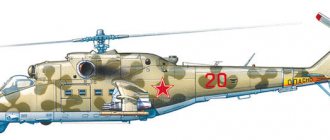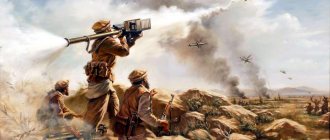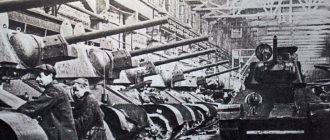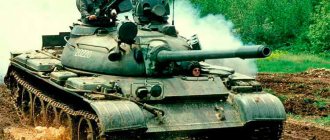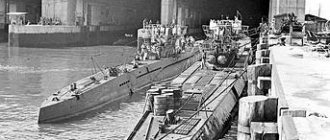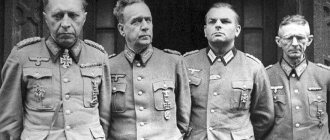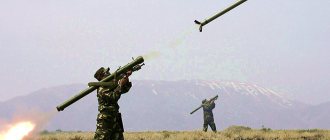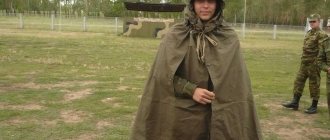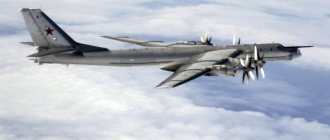31 years ago, Soviet troops were withdrawn from Afghanistan
More than 600 thousand Soviet citizens of all nationalities of the Union passed through the millstones of the Afghan war. The lessons of Afghanistan clearly show the futility of forceful intervention by superpowers in the internal affairs of other states. In particular, the introduction of Soviet troops into the neighboring country was an ill-considered step by the country's former leadership. In the conditions of rivalry between the USSR and the USA, neither side could win a decisive victory, because they relied on the material and military support of these powers.
The April 1978 revolution in Afghanistan led to armed clashes with opposition forces. In fact, a civil war began in the country.
In December 1978, the Treaty of Friendship, Good Neighborliness and Cooperation was concluded in Moscow between the Soviet Union and Afghanistan. Subsequently, referring to this document, the Afghan leadership repeatedly turned to the Soviet government with requests to send troops to Afghanistan. In December 1979, the agreement will become the basis for the leadership of the Soviet Union when making a decision to send troops to Afghanistan.
Initially, there were no plans to involve Soviet troops in combat operations with the opposition. It was assumed that Soviet formations and units would become garrisons and take under protection important areas and objects, thereby freeing up Afghan troops for active combat operations against the opposition, as well as against a possible external enemy. It was even planned to build towns for the families of officers.
Therefore, we cannot agree with some researchers of the 1979-1989 war who call the actions of the USSR troops in Afghanistan an invasion, aggression and occupation. But the deployment of troops was carried out in a country where there was practically a civil war, and as a result of the slow involvement of Soviet troops in hostilities, an escalation of hostilities occurred.
The peaceful campaign gradually turned into war.
The Afghan army was poorly organized and had extremely low combat effectiveness. Therefore, Soviet troops bore the brunt of the armed struggle against armed opposition groups in the early 1980s.
They left the country on February 15, 1989.
Combat composition
The entry of Soviet troops into Afghanistan was carried out in two directions. First along the route: Termez - Kabul - Ghazni; second: Kushka - Herat - Kandahar. In the northeast of the country, it was planned to introduce the 860th separate motorized rifle regiment into Afghanistan along the route: Osh - Pamir Highway - Khorog - Faizabad.
By mid-January 1980, the introduction of the main forces of the 40th Army was basically completed. Two motorized rifle and one airborne divisions, an air assault brigade and two separate regiments were concentrated in full force on the territory of Afghanistan.
During the first half of 1980, the group of Soviet troops was reinforced by another motorized rifle division and two separate regiments. The total number of Soviet troops reached 81.8 thousand people (of which 79.8 thousand were military personnel), including 61.8 thousand people in combat units of the Ground Forces and Air Force.
The combat strength of troops in Afghanistan changed until 1986. Some units were reorganized in order to increase their combat capabilities.
As Major General Evgeny Nikitenko, who served in 1985-1987 as deputy chief of the operational department of the 40th Army headquarters, told Gazeta.Ru, in different years the number of the limited contingent of Soviet troops (OCSV) in Afghanistan varied from 81.8 thousand people in 1980 to 101.317 thousand people in 1988.
As a result, the final composition of the contingent became as follows: command of the 40th Army with support and service units, divisions - 4; brigades - 5; separate regiments - 4; separate security battalions - 6; aviation regiments - 4; helicopter regiments - 3; support team; pipeline crew; medical, repair, construction, apartment maintenance and other parts and institutions.
The maximum number of Soviet troops in the DRA was in 1985 - 109.5 thousand people (military personnel - 106 thousand), including 73.6 thousand people in combat units.
The actions of the rebels and anti-government underground in Afghanistan can be divided into two stages.
At the first stage - from January 1980 - the rebels fought in relatively large formations, attacking small garrisons of Afghan troops. Opposition units put up stubborn resistance in open battles with Soviet troops.
Having suffered a number of serious defeats from units and formations of the 40th Army, from May 1980 the Mujahideen switched to the actions of small detachments - 80-100 people and groups of 30-50 people, which was the beginning of the second stage in the development of tactics of the armed opposition.
The rebels switched to tactics of sabotage and terror, attacking single vehicles and small columns of Soviet and Afghan troops in order to seize weapons, ammunition and kill military personnel.
An analysis of the losses of Soviet troops shows that it was during the sabotage of the rebels that a significant part of the USSR military personnel died.
According to data from Major General Yevgeny Nikitenko, by year, losses among the personnel of the 40th Army were distributed as follows:
1980: 866 people were wounded during hostilities, 368 people were killed during hostilities, 70 people were wounded as a result of sabotage, 78 people were killed as a result of sabotage; 1981: 732 - 344 - 637 - 329; 1982: 1574 - 563 - 1028 - 342; 1983: 849 - 271 - 858 - 311; 1984: 2043 - 837 - 962 - 354; 1985: 1921 - 955 - 852 - 374; 1986: 737 - 324 - 607 - 258; 1987: 540 - 240 - 729 - 274; 1988: 201 - 157 - 404 - 201; 1989: 27 - 12 - 29 - 14.
The losses of Soviet troops from sabotage activities of the rebels were distributed as follows: during shelling of columns - 4.7% of the total number of combat losses; during shelling of permanent deployment points - 1.8%; during shelling of outposts and outposts - 6.2%; in case of explosions by mines and land mines - 6.9%.
The number of killed and wounded Soviet troops was directly dependent on the number of combat operations carried out and amounted to 0.8% killed and 1.5% wounded of the total number of OKSV in the first years of the presence of Soviet troops in Afghanistan, 1.2% killed and 3% wounded during the period of maximum losses in 1984-85. and 0.6% killed and 1.3% wounded in 1987. During the period under review, the numerical composition of the OKSV also changed, but the influence of the number of combat operations on losses was dominant
When implementing intelligence data, 2.5% of the total number of combat losses occurred; during ambushes - 12.5%; died from combat wounds - 20.7%.
At the same time, the main losses were incurred during combat operations in the green zone; from sniper fire; as a result of fire exposure from the village zone; from shelling when units are moving into combat areas; as a result of explosions on mines and land mines; when deploying units and finding them while blocking the area; as a result of fire from ambushes when removing blocks; during the landing of tactical airborne assault forces; as a result of losses of helicopters and aircraft from enemy air defense; during the actions of special forces during the inspection of caravans; when setting up ambushes; during raids on Islamic committees and fortresses.
To make up for losses, the Afghan opposition continued to receive help and support from its foreign sponsors, primarily the United States, China, and the monarchies of the Persian Gulf. Thus, according to Nikitenko, if in 1984 517 caravans with ammunition, food and medicine were discovered, of which 278 (54%) were destroyed and defeated, then during 1985 the movement of 1,802 caravans was discovered, of which 1,356 were destroyed and defeated (75%). In 1986, 456 rebel caravans were destroyed, in 1987 - 565, in 1988 - 392, in 1989 - 16 caravans.
General statistics[ | ]
The table below summarizes all losses listed in the article as of January 23, 2022. These statistics are not official and may change as the information in the article is clarified and supplemented.
| Type | 1979 | 1980 | 1981 | 1982 | 1983 | 1984 | 1985 | 1986 | 1987 | 1988 | 1989 | TOTAL |
| An-12 | 3 | 2 | 1 | 1 | 2 | 1 | 10 | |||||
| An-26 | 1 | 1 | 2 | 1 | 1 | 6 | ||||||
| An-30 | 1 | 1 | ||||||||||
| IL-76 | 1 | 1 | 2 | |||||||||
| MiG-21 | 6 | 1 | 7 | 2 | 5 | 21 | ||||||
| MiG-23 | 5 | 3 | 2 | 1 | 11 | |||||||
| Su-17 | 1 | 2 | 1 | 3 | 8 | 3 | 9 | 4 | 3 | 34 | ||
| Su-24 | 1 | 1 | ||||||||||
| Su-25 | 1 | 1 | 4 | 1 | 8 | 8 | 12 | 1 | 36 | |||
| Yak-28 | 1 | 1 | 2 | |||||||||
| Yak-38 | 1 | 1 | ||||||||||
| TOTAL | 1 | 8 | 5 | 8 | 9 | 20 | 12 | 19 | 20 | 19 | 4 | 125 |
Security of objects
The tasks of protecting OKSV facilities had to be carried out from the first day of stay in the DRA. However, it was only in 1981 that the security of facilities and communications began to develop into a fairly coherent system.
A total of 21 regime zones were created in Afghanistan. The main role in protecting all objects in the system of sensitive zones and, especially, the most important communications belonged to the Soviet troops, for which security battalions, motorized rifle, airborne and other units specially created for this purpose were involved.
In the regiments and divisions of the 40th Army, very significant forces and resources were allocated for these purposes, Colonel Nikolai Kiselev, who served in 1985-1987 as chief of staff of the 1358th separate security battalion in the city of Ghazni, told Gazeta.Ru.
For example, in the 201st Motorized Rifle Division (Kunduz) alone, the number of outposts in sensitive zones was 114 units, guard posts - 15. To ensure their functioning, 2976 soldiers and officers were allocated, as well as the corresponding weapons and military equipment: mortars - 22, cannon artillery - 72, tanks - 43, MLRS BM-21 - 9, armored personnel carrier (BMP) - 213.
Since, due to a lack of manpower and resources, it was impossible to take all roads in Afghanistan under guard, Soviet troops concentrated their main efforts on the most important highways along which the main flow of goods flowed. These highways were guarded by permanent outposts. To protect the roads, 326 outposts and 84 guard posts were set up, manned by 7,758 people.
In addition, another 224 outposts performed a dual task - they guarded both roads and restricted areas.
In May 1984 alone, 6 people were killed and 26 wounded as a result of attacks on security posts located on roads. At post No. 12 of the 180th motorized rifle regiment of the 108th motorized rifle division, guarding the section of the Kabul-Jalalabad road, on May 25, 1981, as a result of a sudden enemy fire attack, 5 people were killed within a few minutes.
1980[ | ]
- March 23, 1980
- Su-17M (217th fighter-bomber aviation regiment). Collided with a mountain while exiting an attack on a target in cloudy conditions in the Chagcharan region. The pilot, captain Nikolai Ivanovich Gerasimov, died. - May 29, 1980
- Yak-38. Fell on takeoff to Shindand. The pilot survived. - August 1, 1980
- MiG-21bis (115th Guards Fighter Aviation Regiment). A DShK was shot down in the Jabal Ussaraj area. Pilot senior Lieutenant Cheshenko L.A. died. - September 9, 1980
- MiG-21R (263rd separate tactical reconnaissance aviation squadron). Shot down by fire from the ground between Ghazni and Kabul. The pilot, Captain V.V. Goryachkovsky, died. - September 23, 1980
- one MiG-21R (263rd separate tactical reconnaissance aviation squadron) and two MiG-21SM. Destroyed on the ground during the explosion of an ammunition depot at Kandahar airfield[10]. - November 12, 1980
- MiG-21bis (115th Guards Fighter Aviation Regiment). Lost in the Faizabad area. The pilot survived.
1981[ | ]
- March 19, 1981
- Yak-28R (87th separate reconnaissance aviation regiment). While performing a combat mission, he crashed on takeoff from Karshi airfield (Uzbekistan) due to a pilot error. The plane burned down, the crew was not injured. - June 15, 1981
- MiG-21UB (27th Guards Fighter Aviation Regiment). Shot down by fire from the ground in the Tora Bora area. One crew member was killed, the second (Mr. Korchinsky) was captured. Later returned to his homeland as a result of an exchange. - June 19, 1981
- Su-17 (217th fighter-bomber aviation regiment). Collided with the ground during a reconnaissance mission. The pilot, senior lieutenant Farid Akmaev, died.[11] - December 14, 1981
- Su-25 (200th separate attack aviation squadron). During the attack, the target crashed into a mountain; the cause of the crash was a roll caused by the asymmetrical suspension of aerial bombs and the “human factor”. The pilot, Captain M.E. Dyakov, died[12][13]. - September 8, 1981
- Su-17 (217th fighter-bomber aviation regiment). The circumstances of the loss are unknown, there is no information about the fate of the pilot, Mr. Lishenkov Vitaly.
1983[ | ]
- February 15, 1983
- An-12 (111th separate mixed aviation regiment). A MANPADS was shot down during landing in the Jalalabad area. All crew members: Mr. N. Samylin, Mr. N. Kotlyar, Art. Lt. S. Kulik, Mr. E. Driker, Art. Lieutenant S. Soloviev died. - April 14, 1983
- Su-25 (200th separate attack aviation squadron). Crashed on takeoff due to an error in piloting technique. The pilot survived.[14] - April 26, 1983
- MiG-21 (probably the 263rd separate tactical reconnaissance aviation squadron). DShK shot down near Kabul; According to the unofficial version, it was lost due to a pilot error or accidentally hit by a missile fired by another aircraft. Pilot senior Lieutenant V. Konstantinov died. - July 2
(or June 17?)
1983
- An-12 (50th separate mixed aviation regiment). Shot down by DShK fire on takeoff from Jalalabad airfield. All on board died (8 people). - August 18, 1983
- Su-17M3 (156th fighter-bomber aviation regiment). A DShK was shot down while approaching a target northwest of Kandahar. Pilot Senior Lieutenant Kostyaev died.[15] - September 16, 1983
- An-12BP (194th separate military transport aviation regiment). He left the runway of the Shindand airfield and collided with two Mi-6 helicopters. Of those on board, 5 people died, 1 survived. - October 29, 1983
- MiG-21bis (927th Fighter Aviation Regiment). A DShK was hit southwest of Bamiyan and caught fire. The pilot ejected near the airfield and survived. - December 19, 1983
- Su-17M3 (156th fighter-bomber aviation regiment). Lost near Bagram. According to the An-26 crew, a MANPADS was shot down. The pilot, Senior Lieutenant Aleksenko A. I. survived. - 1983
(date unknown) - Su-17M3 (136th fighter-bomber aviation regiment).
The circumstances of the loss are unknown. Pilot Smirnov S.A. Deputy Com.Ae. survived. [ source not specified 50 days
]
1986[ | ]
- April 3, 1986
- Su-17M3R (263rd separate tactical reconnaissance aviation squadron). A DShK was shot down southwest of Gardez. The pilot, senior lieutenant Evgeniy Aleksandrovich Pokataev, died.[11] - April 6, 1986
- Su-25 (378th separate attack aviation regiment). Shot down in the Khost area by anti-aircraft fire from a Redeye MANPADS. Pilot A.V. Rutskoy survived. - April 18, 1986
- Su-25 (378th separate attack aviation regiment). Decommissioned after an emergency landing in the Khost area with combat damage from DShK fire. The pilot (Major K.L. Osipov) was not injured. - May 17, 1986
- Su-17M3 (136th fighter-bomber aviation regiment). A DShK was shot down in the Bagram area. The pilot survived. - June 15, 1986
- Su-17UM3 (263rd separate tactical reconnaissance aviation squadron). Lost for non-combat reasons during takeoff from Bagram airfield. Both crew members survived. - August 16, 1986
- Su-17M3R (263rd separate tactical reconnaissance aviation squadron). The plane was shot down by a DShK or MANPADS southwest of Jalalabad. The pilot, Major Fadeev, ejected and was picked up by the PPS crew. - August 23, 1986
- Su-25 (378th OSHAP). A MANPADS was shot down near the Afghan-Iranian border. The pilot, Captain A. G. Smirnov, ejected and survived.[22] - September 22, 1986
- Su-17M3R (263rd separate tactical reconnaissance aviation squadron). During a reconnaissance flight in the Bamyan area, he received combat damage from fire from the ground and crashed during landing. The pilot, Captain Alexandrov, survived. - October 2, 1986
- Su-25 (378th separate attack aviation regiment). Suspectedly collided with a mountain on a night flight in Wardak province. Pilot Senior Lieutenant A. Baranov died. - October 22, 1986
- Su-17M3R (263rd separate tactical reconnaissance aviation squadron). Shot down near the Afghan-Pakistan border. Pilot St. Lieutenant Smolin ejected and was picked up by the PSS. - November 18, 1986
- Su-25 (378th separate attack aviation regiment). MANPADS shot down. The pilot survived.[23] - November 20, 1986
- Su-25 (378th separate attack aviation regiment). Shot down in the Salang area. Pilot Senior Lieutenant Aleshin Igor Viktorovich died.[24] - November 29, 1986
- An-12 (50th separate mixed aviation regiment). Shot down by a MANPADS after takeoff from Kabul airfield. All crew members and passengers were killed (about 30 people).
Main article: An-12 crash near Kabul (1986)
- December 3, 1986
- two Su-25s (378th separate attack aviation regiment). Both planes were shot down by MANPADS west of Kabul. Both pilots survived.[18] - December 26, 1986
- An-26RT (50th separate mixed aviation regiment). Shot down by two MANPADS missiles. 1 member of the crew died. - 1986
(date unknown) - Su-17M3R (263rd separate tactical reconnaissance aviation squadron). Received heavy combat damage and was written off. Pilots Mr. Pakin and Art. Lt. Kokotkin remained alive. - 1986
(date unknown) - Su-17M3R (263rd separate tactical reconnaissance aviation squadron). The plane was damaged by fire from the ground, the pilot Captain Alexandrov ejected near the Bagram airfield and was picked up by a PSO helicopter. - 1986
(date unknown) - Su-17M3 (166th fighter-bomber aviation regiment). Shot down by fire from the ground. The pilot survived.
1982[ | ]
- May 27, 1982
- MiG-21 (27th Guards Fighter Aviation Regiment). Shot down by fire from the ground (direct hit by a suspended aerial bomb). Pilot Mr. Srybny A.I. died. - June 1982
- MiG-21bis (27th Guards Fighter Aviation Regiment). Lost as a result of a fire on board during a combat mission (obviously hit by DShK fire). The pilot survived. - August 13, 1982
- MiG-21R (263rd separate tactical reconnaissance aviation squadron). Lost for unknown reasons during an attack on a ground target. Pilot senior Lieutenant A. Zh. Mironov went missing. Actually died. - August 18, 1982
- MiG-21bis (145th Fighter Aviation Regiment). Shot down near Bagram. The pilot survived. - August 30, 1982
- MiG-21R (263rd separate tactical reconnaissance aviation squadron). Lost during an emergency landing (apparently due to battle damage). Pilot Viktor Nikolaevich Labintsev died in hospital from burns. - September 14, 1982
- MiG-21R (263rd separate tactical reconnaissance aviation squadron). The circumstances of the loss are unknown. The pilot died. - October 24, 1982
- MiG-21R (263rd separate tactical reconnaissance aviation squadron). Shot down by DShK fire. The pilot, Major Olev Ottovich Jaasson, died. - December 4, 1982
- Su-17UM3 (136th fighter-bomber aviation regiment). Shot down west of Kandahar by DShK fire while performing additional reconnaissance after hitting a target. Both crew members Viktor Stepanovich Gavrikov and Igor Nikolaevich Khlebnikov died.
1985[ | ]
- January 22, 1985
- An-26RT (50th separate mixed aviation regiment). A MANPADS was shot down in the Jebal Ussarj area. All on board (7 people) were killed. - February 13, 1985
- Su-17M3 (168th Guards Aviation Regiment of Fighter-Bombers). Collided with the ground northwest of Kandahar while attacking a target at night. The pilot, political commander of the air force, Major Ivanov, died. - March 11, 1985
- An-30B (50th separate mixed aviation regiment). A MANPADS was hit in the Panjshir Gorge; a fire broke out on board and crashed while trying to land at Bagram. 2 crew members died, 3 survived. - June 21, 1985
- MiG-23MLD (982nd Fighter Aviation Regiment). Lost in the Kalat area, presumably could have been shot down by anti-aircraft fire. The pilot died.[19] - July 1, 1985
- Su-17M3R (263rd separate tactical reconnaissance aviation squadron). Lost due to engine failure immediately after takeoff from Bagram airfield. The pilot survived. - July 11, 1985
- An-12 (111th separate mixed aviation regiment). Shot down by a MANPADS on takeoff from Kandahar airfield. 14 people died. Some sources date this loss to September 22. - July 22, 1985
- Su-25 (378th separate attack aviation regiment). Shot down by fire from an anti-aircraft mountain installation in the Panjshir Gorge. The pilot, senior lieutenant Sergei Viktorovich Shumikhin, died.[20] - July 23, 1985
- MiG-23MLD (905th Fighter Aviation Regiment). Shot down by DShK fire while flying from Afghanistan to Taldy-Kurgan (Kazakhstan). The pilot died.[19][21] - August 8, 1985
- MiG-23MLD (982nd Fighter Aviation Regiment). Collided with a mountain northwest of Kandahar, possibly as a result of battle damage. The pilot died.[19] - October 18, 1985
- MiG-23 (982nd Fighter Aviation Regiment). Collided in the air with another MiG-23 (returning to the airfield after the collision) in the Kandahar area. The pilot survived.[19] - December 16, 1985
- Su-17M3R (263rd separate tactical reconnaissance aviation squadron). Lost in the Bamiyan Valley[de], probably as a result of shelling from a DShK. The pilot survived. - December 27, 1985
- MiG-23MLD (655th Fighter Aviation Regiment). Shot down by anti-aircraft fire over Jabal Ussarj. The pilot, senior navigator of the 655th IAP, Lieutenant Colonel A. Levchenko, died.
1989[ | ]
- January 7, 1989
- Su-25 (378th separate attack aviation regiment). A Stinger MANPADS was shot down in the Paghman area. Pilot senior lieutenant (possibly captain) Gordienko died.[33][34] - January 11, 1989
- MiG-23MLD (120th Fighter Aviation Regiment). Lost in the Shindand area due to technical problems (turbo pump failure). The pilot, Captain S. Lubentsov, survived.[35] - January 22, 1989
- An-26M (50th separate mixed aviation regiment). Received heavy damage at Kandahar airfield during a rocket attack, apparently written off. There are no casualties. - January 23, 1989
- An-12BP No. 11987 (930th military transport aviation regiment). Crashed while landing under enemy fire at Kandahar airfield. There are no casualties.
